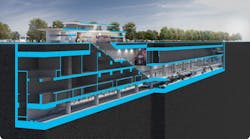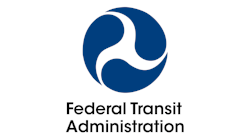Funding for Santa Clara VTA’s BART Silicon Valley Extension FFGA included in federal budget
The federal budget officially includes $500 million allocated for a Full Funding Agreement through the Federal Transit Administration’s (FTA) Capital Investment Grants Program for the Santa Clara Valley Transportation Authority (VTA) BART Silicon Valley Extension project.
“It is a sign of incredible confidence that the FTA and the president of the United States are interested in this project,” said Santa Clara VTA Board Chair and Santa Clara County Supervisor Cindy Chavez. “This $500 million investment inches us closer to getting this project completed.”
The significant federal funding allocation is the first funding commitment for the project through the FTA’s New Starts Funding Program. Santa Clara VTA will submit its formal request for approximately $6 billion, roughly 50 percent of the project cost, through the FTA funding program later this summer, with the expectation of completing the FFGA with the FTA before the end of 2024. The FFGA will outline the terms, timeline and annual allocations Santa Clara VTA will receive. The other half of the project cost is already committed with local and state funds.
“Santa Clara VTA has worked cooperatively with the FTA to advance through the rigorous FTA funding process,” said Santa Clara VTA General Manager and CEO Carolyn Gonot. “This half a billion dollar commitment demonstrates not only that we are on the right track, but that we are in line with FTA guidelines and expectations. It’s great news.”
“The federal government is investing in the future of San Jose and the entire region,” said Santa Clara, Calif., Mayor Matt Mahan. “It just makes sense to connect the Bay Area’s two largest commuter rail systems in the metro area projected to see the greatest growth in jobs and housing in northern California between now and 2050.”
The largest single public infrastructure project ever constructed in Santa Clara County, Santa Clara VTA's BART Silicon Valley will extend Bay Area Rapid Transit service six miles from the Berryessa Transit Center into downtown San José with an underground tunnel, ending in the city of Santa Clara. It will significantly contribute to economic vitality, cleaner air and reduced traffic for commuters, as well as other positive impacts in Silicon Valley.
“Every single great city in the world has multiple ways that people can move goods and services quickly, effectively and efficiently and this allows, literally, the heart of Silicon Valley to be connected to our greater region,” Chavez said.






